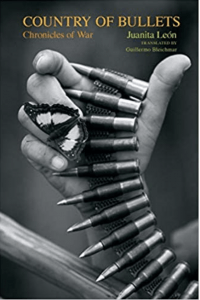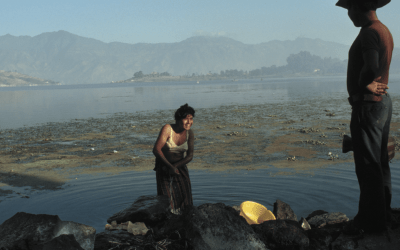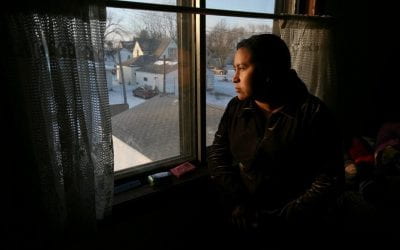A Review of Country of Bullets: Chronicles of War
Everyday Tales of Colombia’s Civil War
 Country of Bullets: Chronicles of War
Country of Bullets: Chronicles of War
By Juanita León, translated by Guillermo Bleichmar
University of New Mexico Press, 2010, 223 pages
Of all the books I’ve read about Colombia’s unending agony of civil war, drug trafficking, massacres, kidnappings and mass displacement, Country of Bullets offers the most vivid portraits of the people caught in the crossfire: the poor, the small town officials, the civil society field workers and the grunts in the armed forces.
The power of Juanita León’s book comes from its context. She vibrantly shows how victims came to be vulnerable and, in doing so, sheds light on those circumstances at the roots of Colombia’s chaos and violence. The simple explanation is the absence of the state, so that citizens in remote areas are forced to submit to the hegemony, by turns, of right-wing paramilitaries, leftist rebels and criminal drug-running gangs.
But León digs deeper to show the complex web of human consequences that arise from the vacuum. She writes about the guerrilla recruit Oswaldo, who joins the rebels because he has no options, and small-town official Roberto Mira, who one day must confront 4,000 displaced peasants in the town square. The reader learns of the needless deaths caused by the lack of medical care in a pueblo in no man’s land, and the courage of an unarmed indigenous community that stood up to rebels.
The author takes us where the law of the gun prevails, providing gripping details of senseless collateral damage, including the killing of a scholarship student during a rebel takeover of a town called Puracé. She relates the slow spiritual death experienced by one of Colombia’s legion of kidnap victims, a world record 3,706 in 2002 .
Author León is a former correspondent with Semana, Colombia’s independent weekly news magazine, and for the last two years, editor of La Silla Vacía, a political news and opinion website based in Bogota. She is intimately familiar with her nation’s recent history and politics, a knowledge that informs her writing. First published in Spanish as País de Plomo in 2006, her book is, more than an assemblage, an elaboration of her magazine reporting over the previous five year period, a crucial time in Colombia’s history.
The book begins in 2001, when a demoralized and nearly failed state under President Andrés Pastrana was still in abortive peace negotiations with the Revolutionary Armed Forces of Colombia (FARC), after giving rebels control over a Switzerland-sized swathe of land in the eastern jungle plains.
One of the book’s most compelling chapters is her excursion into that short-lived mini-republic or “cleared zone” called Caquetania that was ruled by the FARC for three years. She describes the strange interaction between the strutting rebels and the journalists and civil society groups who came to look at them close up. She also sat in on a summary court set up by the FARC to settle local disputes, a common service provided by the rebels in areas they dominate. She details their arbitrary jurisprudence in cases ranging from alimony to paternity disputes and bad debts.
“As I heard the cases, I tried to remember my classes in law school to see whether I could guess the legal principles behind the judges’ decisions. I gave up. Evidently, here were no criteria, just a subjective preference for one party or the other,” León writes.
The FARC’s recalcitrance to negotiate—León said the rebels never sought peace, only to strengthen their grip on Colombian cities—led to the resumption of war in 2002 and the end of Caquetania. That same year, get-tough President Álvaro Uribe was elected, and soon government forces had regained the battlefield initiative, with $5 billlion in military aid from the United States under Plan Colombia, the largest U.S. foreign aid program outside the Middle East and Afghanistan.
There is much to like in this brief, dense book—expertly translated by Guillermo Bleichmar—but my favorite part was the opening chapter about a town called Peque in northwest Antioquia state, and how it was whipsawed by successive takeovers by the paramilitaries and FARC. The principal victims were thousands of displaced citizens, ordered off their land by one group to deprive the other of local support and logistics, to separate the fish from the ocean, as noted in a local saying derived from Mao’s axiom about insurgency.
The brilliance of the chapter comes from images of suffering but also from the author’s analysis of how the warring parties function, how both use dubious informants to cull out sympathizers, informants who try not to get caught, often by falsely incriminating others with whom they have scores to settle. We witness paramilitaries pillaging the local bank, looting the granaries and ordering young boys out to rustle cows so the animals may serve as living mine-sweepers.
One of the young boys enlisted for the task is Jaime Giraldo, and he said he cried as he was forced to steal from his friends. “I know how much effort it takes to buy an animal,” he told León. One of the losers was peasant cattleman Virgilio Davíd, who lost 100 cows, “all my patrimony, earned over the course of 45 years.” Giraldo, Davíd and other Peque portraits are worthy of a García Márquez short story.
My one quibble about this otherwise remarkable book has to do with the foreword by Cornell historian Mary Roldan. She rightly praises León’s courage and that of other Colombian reporters, but accuses the foreign press corps, “with scant exceptions,” of being timid consumers of government pablum who “rarely venture outside the confines of the capital city.”
Speaking for my publication alone, I can assure her that the Los Angeles Times routinely ventured outside those confines. The Times’ then-bureau chief T. Christian Miller was briefly kidnapped in 2002 by the FARC as he reported a story in southeastern Putumayo state. In 2003, the paper’s special correspondent Ruth Morris and freelance photographer Scott Dalton were kidnapped by the rebel group ELN for 10 days while on assignment in eastern Arauca state. I suspect other foreign news organizations have similar stories to tell.
Country of Bullets leaves unanswered the riddle of why Colombia continues to suffer, more than four decades after the FARC and ELN launched their insurgencies. What it does do is tell human stories that catalogue the countless ways in which the Colombian state, through its absence, failed its people. It will be at the top of the list of books read in those halcyon days to come when, dare we hope, the violence ends and future generations of Colombians turn to accounts like this one to learn how bad it was.
Fall 2010 | Winter 2011, Volume X, Number 1
Related Articles
Guatemala: Editor’s Letter
The diminutive indigenous woman in her bright embroidered blouse waited proudly for her grandson to receive his engineering degree. His mother, also dressed in a traditional flowery blouse—a huipil, took photos with a top-of-the-line digital camera.
Making of the Modern: An Architectural Photoessay by Peter Giesemann
Making of the Modern An Architectural Photoessay by Peter Giesemann Fall 2010 | Winter 2011, Volume X, Number 1Related Articles
Increasing the Visibility of Guatemalan Immigrants
Guatemalans have been migrating to the United States in large numbers since the late 1970s, but were not highly visible to the U.S. public as Guatemalans. That changed on May 12, 2008, when agents of Immigration and Customs Enforcement (ICE) launched the largest single-site workplace raid against undocumented immigrant workers up to that time. As helicopters circled overhead, ICE agents rounded up and arrested …



